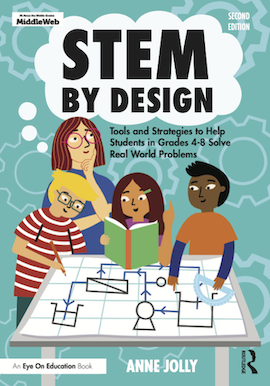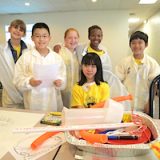STEM by Design Book Discussion Guide

You can use these study questions as you read STEM by Design (Second Edition, Routledge, 2025) individually or in a team. Often a team study will surface more ideas, generate discussions, and drive learning deeper. In either case, spend time with those questions that will generate the most learning for you.
Grab a journal or tablet to jot down ideas and information as you read this book. If you are working with others, discuss the answers to these questions together. If working alone, you can journal your answers.
If you’d like to share some of your thoughts here, as you work through the guide, use the Comments below!









Many skills can be built through STEM, such as creativity, critical thinking, innovation, problem-solving, and teamwork, which will help students to be successful in the future. STEM also empowers students with new ways to create, innovate, iterate, and reflect, which are directly related to the skills students will need to be prepared
Wonderful observations, Gwana! Spot on! In fact, those are the new “must have” skills that employers are looking for in applicants and current employees.
It is really wonderful for the authors of books to be in contact with those who read their books and want to inquire about some things. I was pleased with this wonderful book.
Thank you! I’m glad you find it helpful.
Dear Anne, your book discusses stems for grades 4 -8. Are there any STEM book for grades 10 -12?
Hi, Rini!
We’re not aware of a book that takes Anne’s in-depth, teacher friendly approach and also focuses on the high school years.
You might explore “STEM Road Map 2.0: A Framework for Integrated STEM Education in the Innovation Age, 2nd Edition” (Routledge, 2021). It’s described as “an integrated STEM curriculum encompassing the entire K-12 spectrum, with complete grade-level learning based on a spiraled approach to building conceptual understanding.”